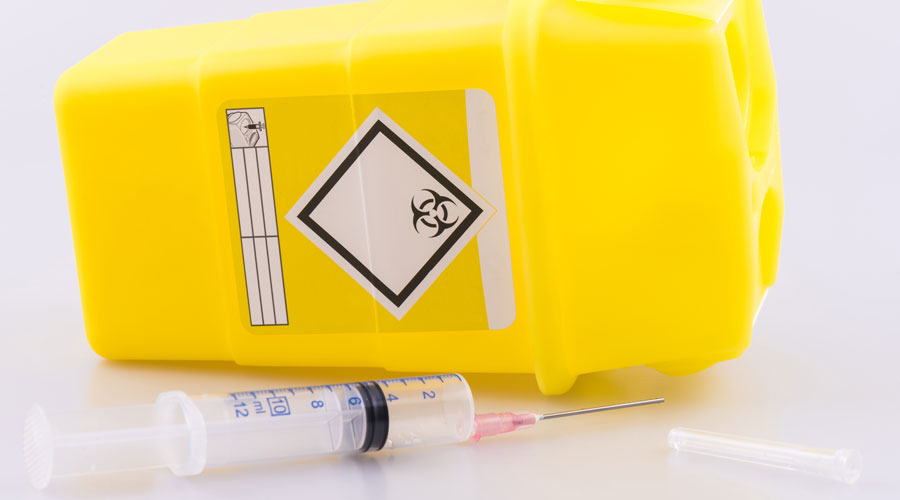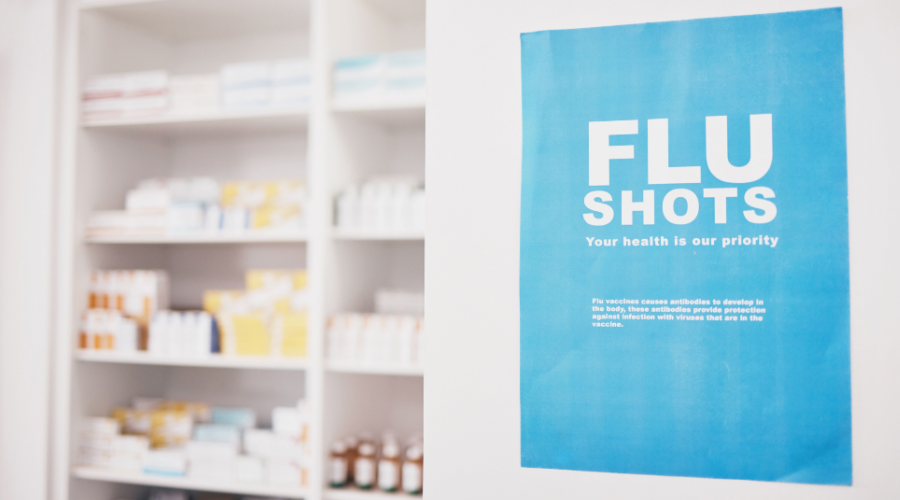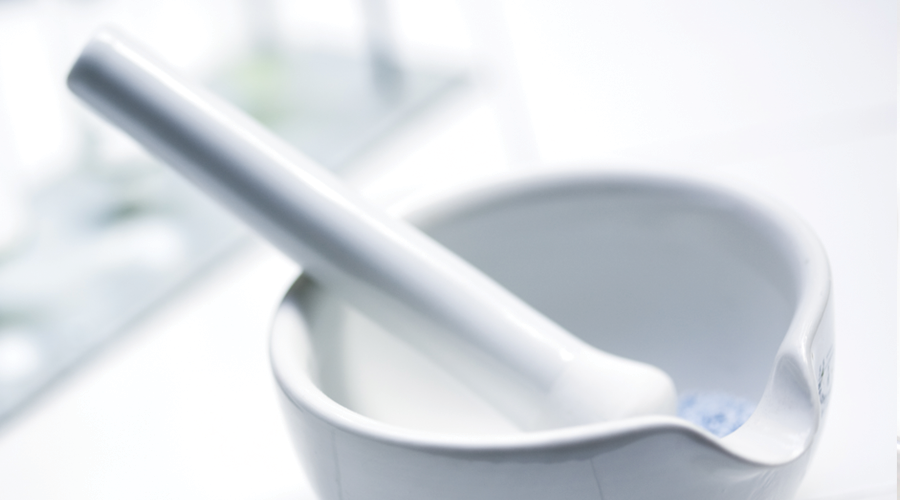Inside: Sharp medical devices can be hazardous to your patients. This helpful website provides your pharmacy and your patients with the resources needed for safe sharps disposal.
If your pharmacy offers immunizations, or any injection, you have the unfortunate job of poking your patients with sharp objects.
Followed by the unfortunate job of disposing of those sharp poking devices.
Disposal is extra-complicated because those devices can contain potentially hazardous pathogens carried by blood and fluids.
Some of the main blood-borne dangers include HIV, hepatitis B, and hepatitis C. Other risks include diseases involving viruses, bacteria, fungi, and other microorganisms.
So, it’s paramount for pharmacies to dispose of sharps properly to protect patients from harm. And to shield your pharmacy from liability.
On top of that, your patients who use sharps at home have the same responsibility. Except they don’t have your expertise. And they often need guidance to dispose of sharps properly.
So, what is a sharp?
A sharp is any device with sharp points or edges that can puncture or cut skin.
Examples of sharps include:
- Needles
- Syringes
- Lancets
- Auto injectors
- Infusion sets
- Connection needles and sets
The risks of sharps disposal are severe enough that the Centers for Disease Control and Prevention (CDC) and the Occupational Safety & Health Administration (OSHA) are both involved in guiding sharps disposal.
And, each state has its own regulations for businesses and households, further complicating the issue.
In light of the confusion and risks of sharps disposal, the website SafeNeedleDisposal.org helps patients and pharmacies understand how to dispose of sharps safely.
NeedyMeds, a national non-profit information resource for healthcare financial assistance programs, runs the website.
What is SafeNeedleDisposal.org?
SafeNeedleDisposal.org provides several resources to help people dispose of sharps safely.
You can use it both as a resource for your pharmacy and to help patients understand how to dispose of sharps correctly.
State medical waste laws regulate households and businesses. Those regulations differ from state to state. SafeNeedleDisposal.org gives detailed disposal directions for every state in the U.S. based on the state’s regulations. And it makes finding a disposal site in each state simple.
The website helps you follow your state’s laws and keep your patients safe in several ways:
- Explains the specific rules and regulations in each state
- Lists sharps disposal options
- Provides the location of disposal sites in your area
- Gives the name and contact information of the state agency responsible for the regulations
- Describes approved disposal containers
- Explains different disposal methods
Although the website provides specific information based on each state, it also emphasizes three rules for everyone no matter where they reside or do business.
No matter what state you live in (or do business in), these rules apply:
- Never throw sharps loosely into the trash or a toilet
- Don’t recycle sharps
- Dispose of sharps that retract after use, or are very small, like all other sharps
How to use SafeNeedleDisposal.org
The main feature of the website is its state-by-state disposal information.
On the homepage, you’ll find an interactive map of the U.S. Simply click on your state and you’ll see graphics and instructions—based on specific rules and regulations—detailing proper disposal of sharps for that state.
You’ll also find a list of local disposal locations so you can find the one nearest to your pharmacy.
The information can help your pharmacy safely dispose of sharps. But it’s especially helpful for your patients who probably won’t know what to do without your guidance.
Share the website with your patients. And share the sharps disposal information from the website.
The website provides several resources your pharmacy can use to get the news out including:
- Stickers
- Posters
- Fact sheets
- Rack cards
- Frequently asked questions
Consider handing out the resources with patients’ prescriptions or putting them in a rack on the counter.
And, share the website through your social media pages and in conversation.
The basics of safe containers for sharps
According to the website, most states allow patients to place their used sharps in proper containers and throw them away at home. It explains the different containers cleared by the U.S. Food and Drug Administration (FDA) for use. And, it provides a link to a CDC guideline for sharps disposal containers.
At a minimum, the containers must be:
- Strong
- Plastic
- Leak-resistant
- Upright
- Properly labeled
- Have a tight-fitting, puncture-resistant lid
Both agencies use laundry detergent and bleach bottles as examples of acceptable containers.
Needle clippers are considered FDA-cleared sharps containers. Simply clip the needle and throw the syringe in the trash. When the needle clipper is full, put them in a proper container.
What to do if patients can’t obtain a sharps disposal container
Even if patients can’t find a sharp disposal container immediately, they should never throw away sharps in trash cans, recycling bins, or the toilet.
If patients can recap the sharp, they should do that without bending or breaking the needle.
Alternative sharp disposal options provided by the website:
- Drop box or supervised collection points
- Household hazardous waste collection sites
- Mail-back programs
- In-home individual disposal products
How to dispose of sharps in your pharmacy
Pharmacies have two primary options for safe sharps disposal:
1. A pick-up service
2. A mail-back company
For more information on the pros and cons of these disposal options for your pharmacy, check out this article on how to dispose of sharps.
Educate your pharmacy and help your patients practice safe sharps disposal by using SafeNeedleDisposal.org.
Want more pharmacy business tips and advice? Sign up for our e-newsletter.












